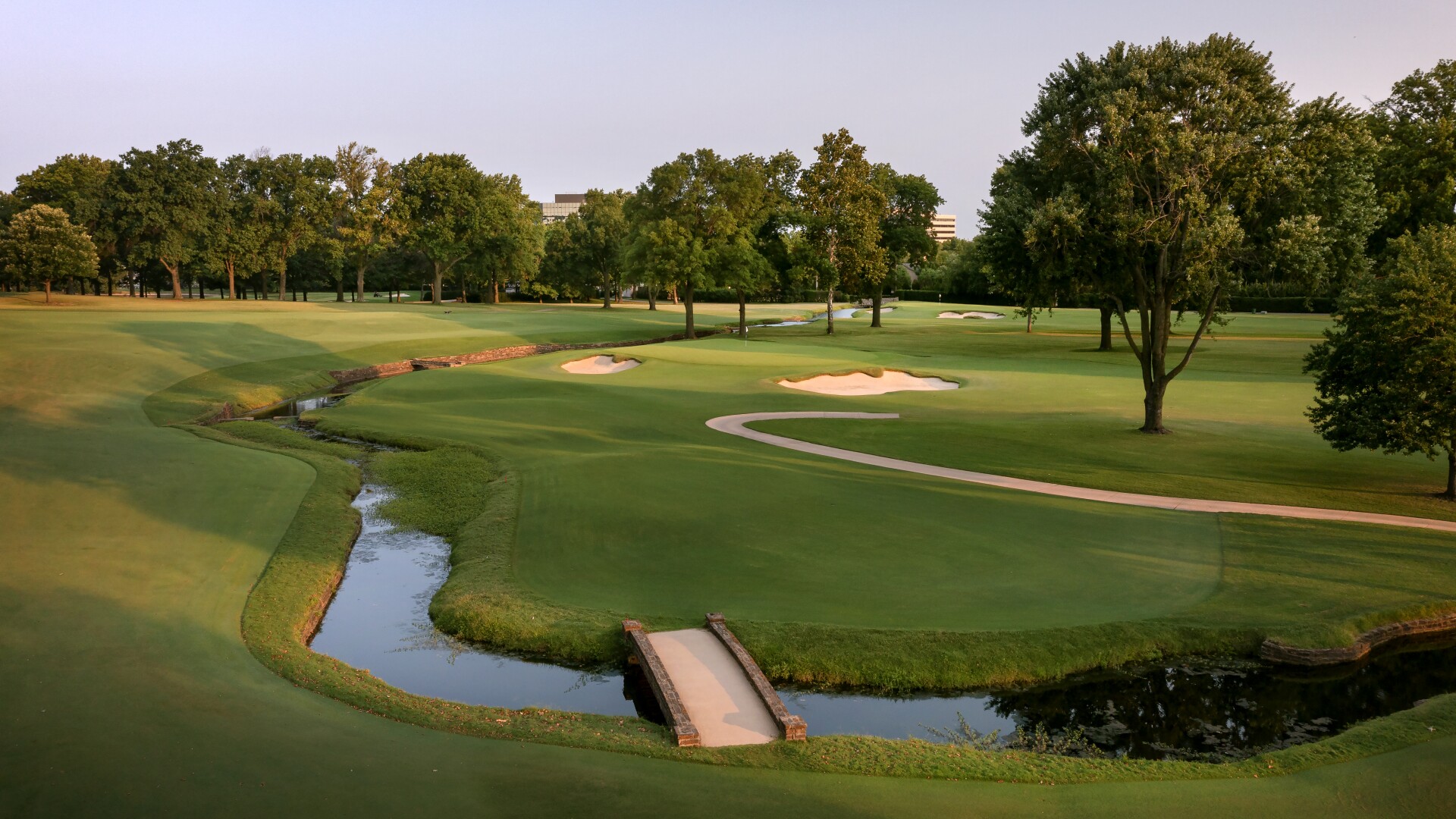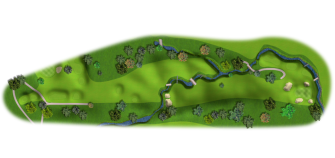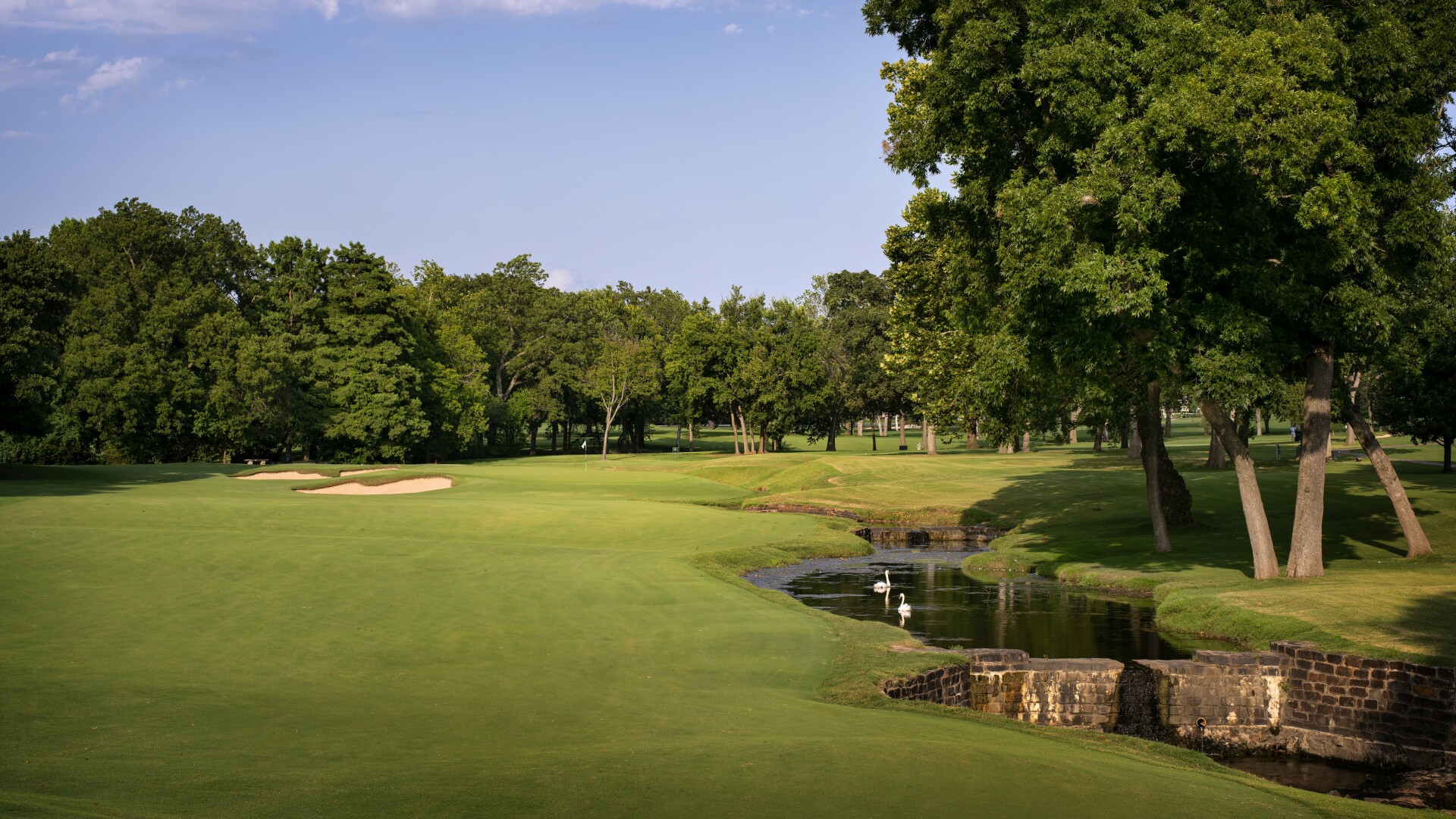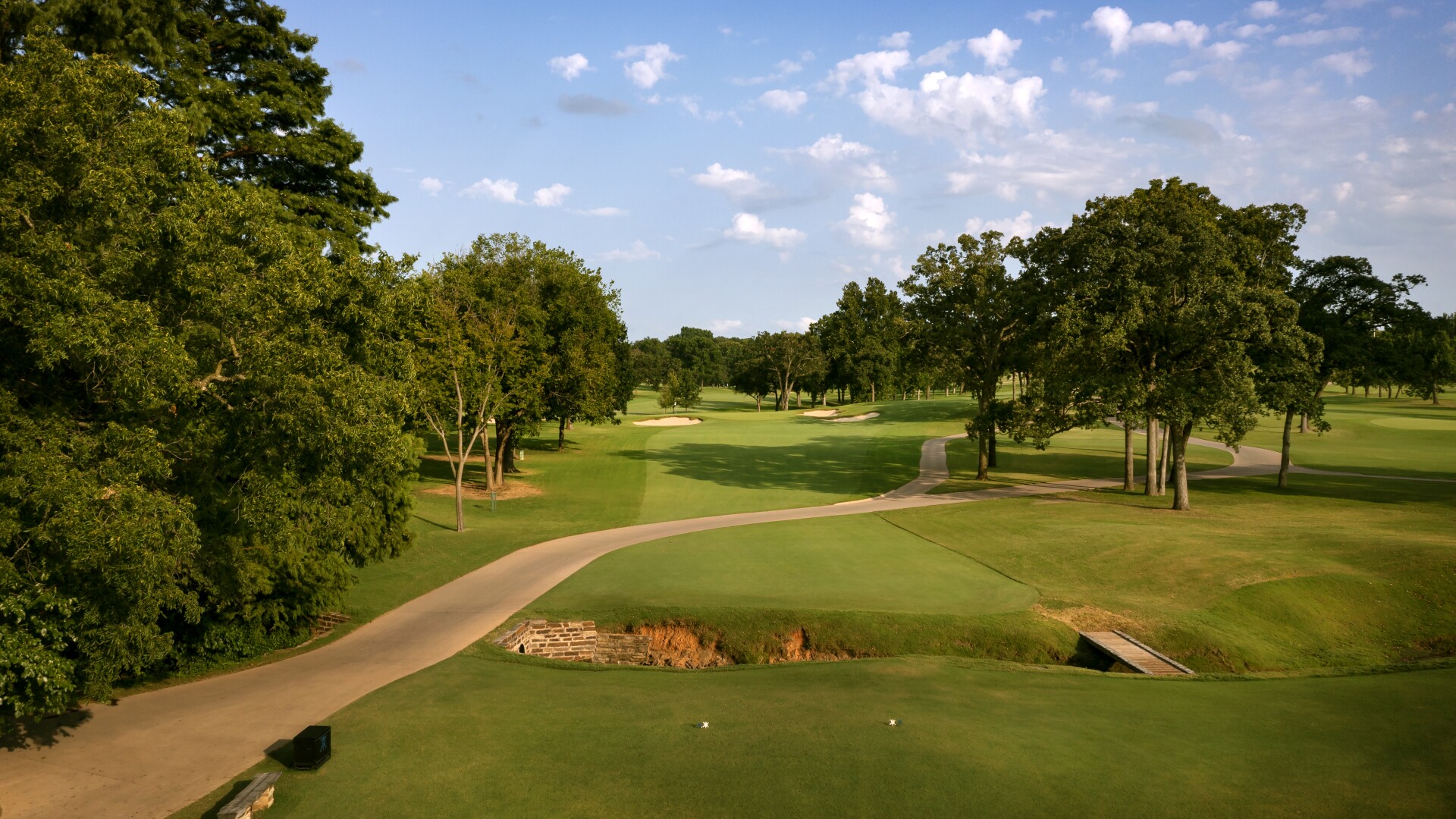About
Consistently recognized as one of the top 100 golf courses in the world, the Championship Course at Southern Hills Country Club was originally designed by Perry Maxwell and opened for play in 1936. It was restored to reflect Maxwell’s original vision by Gil Hanse in 2019. Southern Hills has hosted eight professional majors, including last year’s 2021 KitchenAid Senior PGA Championship. The 2022 PGA Championship will mark the fifth time the PGA Championship has been contested at Southern Hills (1970, 1982, 1994, 2007).
70
Par
7,365
Yardage
1
2
3
4
5
6
7
8
9
10
11
12
13
14
15
16
17
18

Hole 1
4
Par
451
Yardage

The opening shot is from an elevated tee to a slight dogleg-left. The ideal position is middle or a little left, avoiding two bunkers and rough along the left side. The green slopes from front-right to back-left and is guarded by a large bunker front-right.

Hole 2
4
Par
480
Yardage

Perhaps the most demanding driving hole on the course requires carrying bunkers and a winding creek that turns and parallels the right to left sloped fairway. Players usually face a long approach to reach the well-bunkered green.

Hole 3
4
Par
444
Yardage

The best tee shot on this sharp dogleg left will find the right-center of the fairway. The green is severely sloped and bunkered on both sides.

Hole 4
4
Par
377
Yardage

This picturesque short par-4 features a rolling fairway and a heavily bunkered, elevated green. Approach shots are made more difficult by the absence of level lies, while the severe back-to-front slope of the green puts a premium on leaving the ball below the hole.

Hole 5
5
Par
656
Yardage

The longest hole on the course doglegs slightly to the left. Bunkers on both sides of the fairway narrow the landing area, with plenty of trees and heavy rough awaiting the errant shot. Expect to see many players lay up to avoid both sand and water and leave a wedge third shot into the well-bunkered and undulating green.

Hole 6
3
Par
226
Yardage

The first par-3 plays downhill, and shifting winds can complicate club selection. A creek starts short of the green and runs to the left, while bunkers sit both front-left and front-right. Still, the ideal tee shot is to the front of the green as going long flirts with a fence marking the edge of the property.

Hole 7
4
Par
443
Yardage

A blind tee shot to the crest of a hill reveals a narrow, false-front green situated between bunkers left and a creek right. Players have the option of playing to the top of the hill and facing a longer approach or trying to drive down the hill, bringing the creek on the right side of the fairway into play but being rewarded with a shorter approach.

Hole 8
3
Par
220
Yardage

Playing into the predominant, but often hidden, southern breeze makes this long, uphill par-3 even more demanding. It is better to be short than over this difficult green complex, which slopes hard left toward a creek.

Hole 9
4
Par
395
Yardage

Two fairway bunkers guarding the inside corner of this dogleg-right put extra pressure on the tee shot. Plus, the prevailing wind and an elevated green make this hole play longer than its yardage. And the green slopes significantly back to front.

Hole 10
4
Par
376
Yardage

With a creek winding down the left side of the hole then crossing the fairway, plus a thick stand of trees right, the tee shot must be carefully placed. The approach is uphill to a very difficult green surrounded by bunkers.

Hole 11
3
Par
173
Yardage

The shortest hole on the course requires pin-point accuracy because its small green is surrounded by four bunkers and a creek to the left. Furthermore, the tee is elevated and the winds in this corner of the property tend to swirl.

Hole 12
4
Par
461
Yardage

Both Ben Hogan and Arnold Palmer called this slight dogleg-left one of America's greatest par fours. Drives are to a blind landing area on the right-to-left sloping fairway. The green slopes left to right and is protected by bunkers short, left, and long, plus a creek short and right.

Hole 13
5
Par
632
Yardage

What is likely the last good birdie opportunity is a slight dogleg-left. Reaching the green in two requires a blind shot to a small green well protected by sand and water. Laying up short of the two ponds still provides a good chance for birdie.

Hole 14
3
Par
230
Yardage

The green on this long par 3 is surrounded by six bunkers. The prevailing wind is right to left toward the out-of-bounds which runs along the entire left side.

Hole 15
4
Par
417
Yardage

Another dogleg-left, with a bunker guarding the inside corner that narrows the landing area. Bunkers and collection areas circle a green that severely slopes back-right to front-left. Playing from below the hole is a must.

Hole 16
4
Par
522
Yardage

A par 5 for the membership becomes a long par 4 for the Championship. The tee shot must carry a gentle slope to provide a view of a small green featuring bunkers short, right, and long.

Hole 17
4
Par
371
Yardage

A great short par-4 hole, defined by a creek to the right and a thick stand of trees to the left. Adding to the challenge is the absence of a level lie in the fairway when hitting a finesse shot into a small, undulating green. Playing down the left side provides the best angle into the green. When the tee is moved forward, as it likely will, this hole provides an exciting opportunity to attack and make a birdie, eagle or worse.

Hole 18
4
Par
491
Yardage

This dogleg-right requires finding the plateau on the left side of the fairway. The green is elevated, well bunkered, and slopes hard from back to front. The most difficult par 4 on the course will prove a challenging finish.


